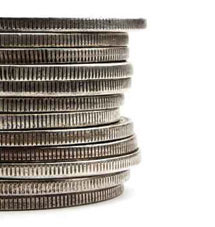
ANSWERS / Real Estate Bubble
Why did the real estate bubble occur? Why then did prices drop like a rock and are only slowly recovering?
Real estate is only one of several asset classes to which this happened, but it is likely the one that affected the largest number of us.
Under the current banking system, oversight demands that most loans be covered by some sort of asset which can be claimed by the bank in case of default. What appears to be a very reasonable regulation has 2 very adverse effects:
1) Most lending is done for non-productive purposes, such as real estate loans. This does not mean that loans should not be available for real estate, but rather that by far the greatest majority of these are not productive, but rather are for the purchase of used homes or refinancing, neither of which enhances general productivity. Probably only about 3% of these are actually for new building construction. This means that businesses, especially relatively new ones – which do create by far the majority of jobs – are not financed by banks, but instead need to rely on family, friends, and other informal funding sources until they become large enough to enter the commercial markets of bonds, stocks, and structured paper.
2) Secondly, the nature of asset loans is that the loan is to a certain value of the underlying asset, called Loan-To-Value – again, what appears to be a perfectly reasonable decision. The trouble is that as a particular asset class (e.g., your home) for whatever good reason increases in value, this drives an increase in lending capacity from banks into that same asset, meaning there are now more buyers for that asset. Well, you know, that more buyers increases demand which increases prices, which increases what banks are willing to lend, which increases buyers, which increases – I think you get the message.
OK, that explains the bubble but why the crash?
This process tends to be cyclical and virtually always ends in tears. The reason is that under our current banking regime, the Fed uses interest rates to increase or decrease the amount of lending (go to the ANSWERS page for a more thorough workup of this). Invariably there comes a time when the whole economy tends to overheat and so the Fed increases interest rates. As these are increased, fewer and fewer people want that particular asset as they are now not easily able to afford it anymore. Usually the buildup to the bubble is a lot slower than the crash, as confidence in a particular asset class can be lost in a "New York Minute" as they say.
Alright, but why does the system then not restore itself as quickly? The reason is that once the asset class has lost a lot of value, the loan-to-value ratios are now way too high and many people are trying to either sell or pay off their debts. When most are trying to do this at the same time it does not work and so all lose. Remember that for one person to sell, someone else needs to be willing to buy, and under these circumstances, there are very few buyers.
How would this be different under a Real Money Economy? Here are a number of points:
1) Interest rates would be market determined, meaning that the room for malinvestment is much smaller;
2) Money would not be created through deposit creation during the boom cycle, or destroyed through the bust cycle making the asset value cycles much weaker and therefore the economy as a whole much more stable (see ANSWERS page for further on this);
3) Money lending would be much stronger for productive purposes as the Real Money Economy would use the structuring of the credit/investment side of banking as defined by Limited Purpose Banking (see the ANSWERS page – is that beginning to sound familiar?).
In other words real estate booms and busts, if they happen at all, would be much weaker.